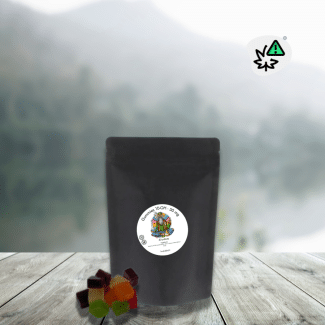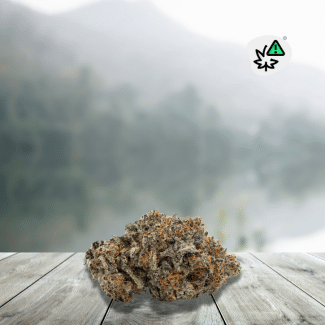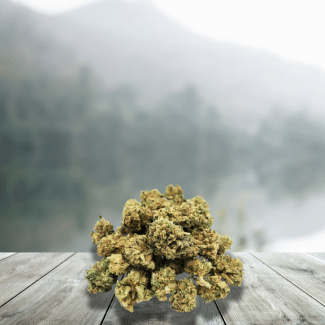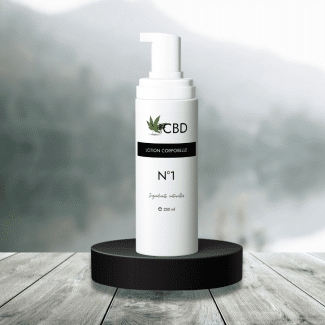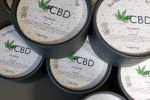
What are the effects and properties of 10-OH-THC, and how does it differ from 11-OH-THC?
In the world of cannabinoids, new molecules continue to attract growing interest, particularly with the emergence of synthetic or metabolized compounds derived from THC (tetrahydrocannabinol). Among these molecules, 10-OH-THC , also called 10-hydroxy-THC, is beginning to attract the attention of researchers and consumers curious about the effects of modified cannabis. It is often compared to another well-known derivative: 11-OH-THC , a key metabolite of THC in the human body. But what exactly is 10-OH-THC, how is it made, and most importantly, how does it differ from 11-OH-THC? This is what we will explore in depth.
What is 10-OH-THC and how is it made?
10 -OH-THC (10-hydroxy-THC) is a cannabinoid derivative that does not occur naturally in large quantities in the cannabis plant. It is formed by specific chemical processes that modify the original structure of THC. The main process behind the creation of 10-OH-THC is hydroxylation , which adds a hydroxyl group (-OH) to the THC structure, usually at the 10 position of the carbon ring of the molecule.
The human body is capable of metabolizing THC after ingestion, and a number of its hydroxylated derivatives are formed naturally during this process. organic chemistry processes which involve the use of various chemical or enzymatic agents. This process, called hydrogenation , further changes the chemical structure of THC, creating a new compound with unique properties.
Here are the main steps in the formation of 10-OH-THC:
- Hydroxylation : A hydroxyl group is added to the THC molecule at position 10, thereby changing its chemical structure.
- Hydrogenation : Although this process does not occur naturally in the body, it is used in the laboratory to stabilize and complete the chemical structure of 10-OH-THC.
The development of these compounds in the laboratory makes it possible to produce stable synthetic cannabinoids, often used for therapeutic purposes or for research.
Effects of 10-OH-THC
Although research on the specific effects of 10-OH-THC is still limited, certain preliminary studies have identified interesting avenues concerning its interactions with the human body. 10 -OH-THC appears to work by interacting with the endocannabinoid system , much like other forms of THC or CBD.
The endocannabinoid system is made up of specific receptors called CB1 and CB2 , which are found in various parts of the body, including the brain, nervous system, and immune system. Here are some potential effects of 10-OH-THC, mainly inferred from its chemical structure and observations on other THC derivatives:
- Relaxation and Stress Reduction : 10-OH-THC appears to have calming effects, which could make it a great choice for those looking for gentle relaxation, without the strong psychoactive effects of traditional THC. Users generally report a feeling of relaxation and reduced anxiety, similar to that provided by some other cannabinoids.
- Improved sleep quality : Many people who use cannabis or cannabinoids report improvements in sleep. Although this has not yet been rigorously confirmed for 10-OH-THC, its structural proximity to other cannabinoids suggests that it may also have positive effects on insomnia or sleep quality.
- Anti-inflammatory effects : Like many cannabinoids, 10-OH-THC could potentially play a role in reducing inflammation and relieving certain chronic pain. However, studies specific to this molecule are still necessary to confirm this effect.
It is important to note that 10-OH-THC appears to have much weaker psychoactive effects than regular THC. Indeed, its binding to CB1 receptors (those which are mainly responsible for the psychoactive effects of cannabis) is weaker than that of traditional THC.
10-OH-THC vs. 11-OH-THC
Although 10-OH-THC and 11-OH-THC share some similarities as THC metabolites, there are also notable differences between these two compounds.
- Origin : 10-OH-THC is a secondary metabolite, while 11-OH-THC is the primary active metabolite formed when THC is metabolized by the liver. This means that 11-OH-THC is generally present in higher quantities in the body after ingesting THC.
- Affinity for cannabinoid receptors : 11-OH-THC binds more strongly to CB1 receptors in the brain, which explains why it is more psychoactive than 10-OH-THC. In contrast, 10-OH-THC has a lower affinity for these receptors, making it a compound less likely to cause strong psychotropic effects.
- Psychoactive effects : 11-OH-THC is well known for its pronounced psychoactive effects, often comparable to those of THC, or even more intense in certain circumstances. Conversely, 10-OH-THC offers much more subtle psychoactive effects, making it an attractive option for users seeking therapeutic benefits without the typical "high" effect.
Products containing 10-OH-THC
Although 10-OH-THC is still relatively new to the cannabinoid market, products containing this compound are starting to appear. Here are some examples of the types of products that can be found:
- Flowers enriched with 10-OH-THC : Cannabis flowers infused with 10-OH-THC provide a balanced experience with a unique taste. These products typically contain a high 10-OH-THC content (up to 60%) with a very low THC content (less than 0.1%).
- Prerolls : For those seeking convenience, 10-OH-THC prerolls These products also contain a high percentage of 10-OH-THC while remaining within legal THC limits.
- Vape Pens : Vape pens with high 10-OH-THC content (up to 95%) offer a discreet and convenient option for those who want to enjoy the effects of 10-OH-THC without combustion. These pens are popular for long trips or relaxing times.
These products generally comply with European regulations regarding THC content, with THC concentrations below 0.2% , allowing their legal sale in several European countries.
Conclusion
10 -OH-THC is a cannabinoid derived from THC, obtained through chemical processes of hydroxylation and hydrogenation. Although research is still limited, this compound appears to offer interesting effects on relaxation, stress reduction and improved sleep, without causing psychoactive effects as intense as those of classic THC. Its comparison with 11-OH-THC shows notable differences in terms of effects and psychoactive potency. With the emergence of products containing 10-OH-THC , this molecule may well play an increasingly important role in the cannabinoid industry, particularly for those seeking wellness solutions without the intensity of psychotropic effects.

